#014
Building a bridge
between society and design
Daijiro Mizuno
Japanese Color: SANGO-iro
#014
Daijiro Mizuno
Japanese Color: SANGO-iro
MOVIE

Associate Professor
Faculty of Environment and Information Studies
We are surrounded by various forms of design in our everyday lives, not only in the form of clothing and architecture,
but also extending to services and systems that are not visible to us.
The research of Associate Professor Daijiro Mizuno captures the concept of design through a broader definition to its explore new possibilities.
Through digital fabrications(*)
that evolve from day to day, the modern times are revealing a growing expansion in the possibilities of design and roles of designers.
If each and every individual were to become a designer with the heart and spirit of design, it would then be possible to bring about a revolution in society.
* Technology for cutting out the shapes of digital data such as 3D and CG from various materials, using digital machine tools such as laser cutters and 3D printers.
I engage in “design research.” Design research is the creation of knowledge as acts of design and theoretical research. This concept, which emerged in the 1960s, was initially a form of methodological research used to explore the optimal designs for the industrializing society. With the dawn of the information society in the 1980s – 1990s, the subject of design shifted toward “user experience.” This refers to the experience that people gain when they use products and services, and is a concept that looks not only at how user-friendly products are, but also focuses on how to bring about the realization of what users truly wish to accomplish happily and comfortably. Furthermore, after entering the 2000s, design took on a greater focus on the importance of a more comprehensive concept of “social systems and services.”
The issue does not lie in the idea that “design = appearance.” In designing all the forms of artifacts, it is necessary to consider who the targets are, what the problems are, and how their realization is brought about. My research attempts to shed light on these questions from both the perspectives of “acts of design” and “design theory.” The aim is to reintegrate all the fields of design that have become fragmented in the 20th century to correspond with the artifacts produced, such as fashion, graphics and products, and to create new methods and perspectives.
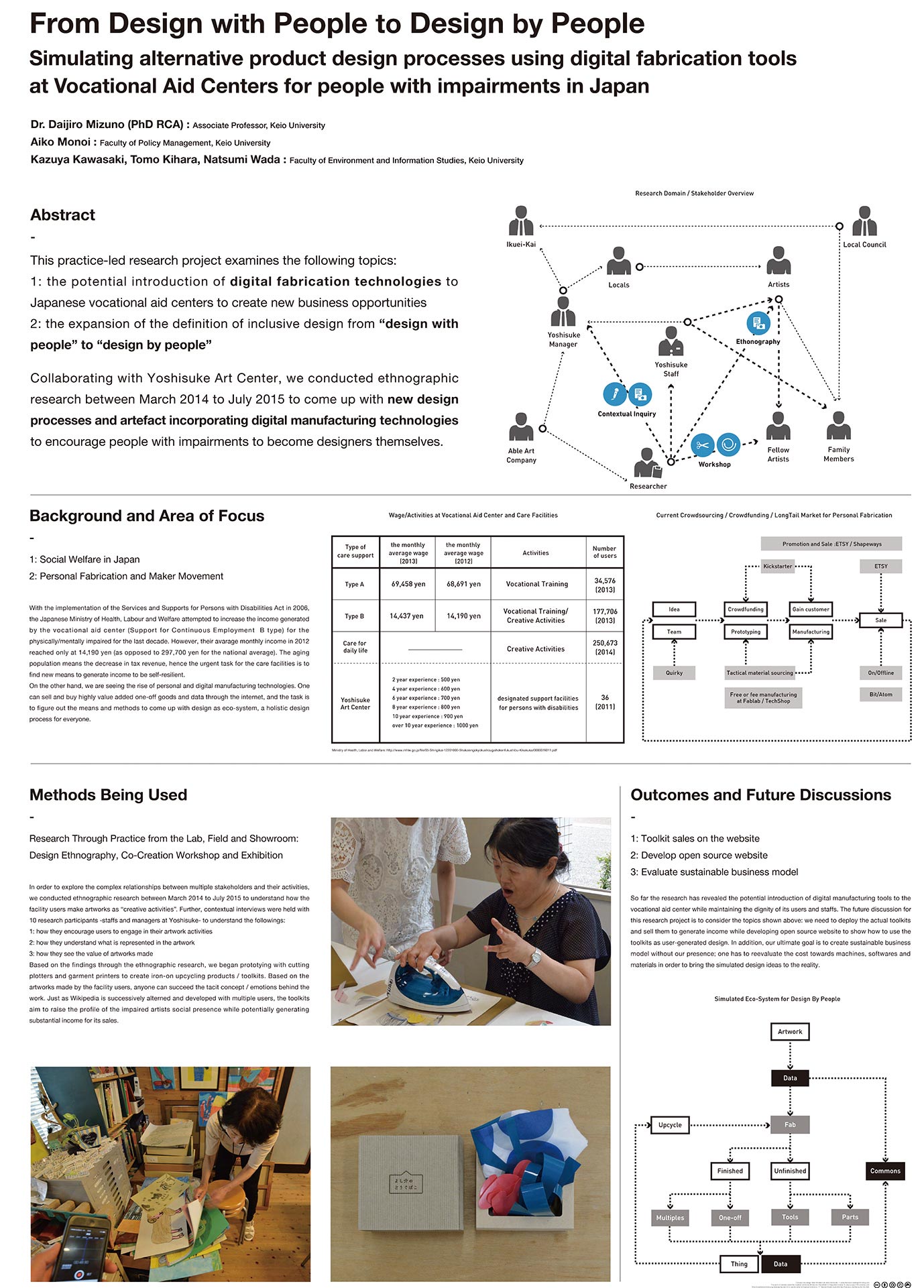
The aim is to create knowledge through design. Today, design encompasses even subjects such as services and systems. Hence, Assosiate Professor Mizuno seeks to shed light on the subject of design, its problems, and the systems to enable realization, from the two perspectives of “acts of design” and “design theory.”
In my process of learning about fashion in the Master’s and Doctoral courses at the Royal College of Art in the United Kingdom, I learnt about the design philosophy known as “inclusive design,” which subsumes the various differences existing among people, such as nationality, sex, age, and disability, as well as about design methods in other fields of design, such as service design and interaction design. I also struggled with the thoughts that society would not change if I became settled comfortably in the fashion industry, and how apparel for the body, which has been created and idealized for the spectacle that fashion has become, could play a useful role in the real world. Hence, by capturing the concept of “fashion” through a broader definition, I considered the idea that the design subject does not remain only in the realm of dressing up an individual beautifully, but also encompasses the creation of the self through one’s own way to form new social groups when we step out onto the streets. In short, rather than viewing fashion merely as a form of design, we could explore the new possibilities of fashion design by considering its social function. I felt that even a field such as fashion design could possibly be closely related to the ways in which society works.
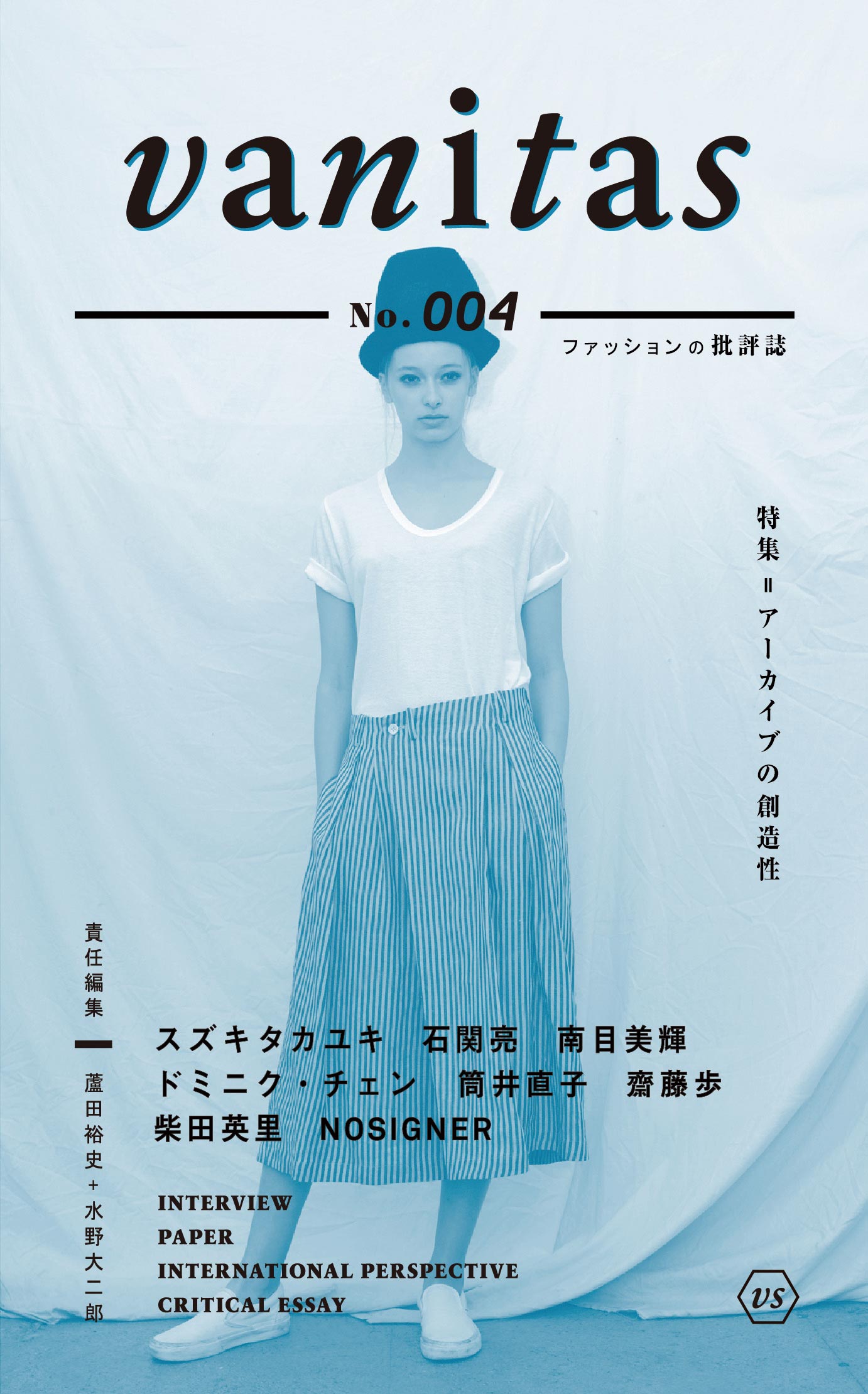
Associate Professor Mizuno founded this publication in March 2012 with the objectives of raising questions and stirring debate about the apparent lack of fashion criticism in Japan. In order to instill a culture of fashion criticism in Japan, he has produced this publication not from the perspective of the present moment, but rather, with a view to the future 10 or 50 years later.
I sense the importance of the creative power of the general public. For example, there are cases where wheelchair users hesitate to leave the house for fear that they may cause trouble to others when they go out on the streets. Let us attempt to consider that the problem does not lie in them, but in the environment. With that in mind, we then manipulate the environment in creative ways and come up with ideas to make it more comfortable for them to go out; similarly, we try to give consideration to people who are inhibited by the environment. By doing so, we should be able to generate ideas that can enable the social participation of various people, including wheelchair users, baby pram users, and people with mobility problems.
Design has been undertaken by specialists with advanced knowledge and processing technologies, which has resulted in a split between producers and consumers among the general public. However, with the emergence of digital fabrication technology, it is gradually becoming possible for anyone to become a designer, and to be proactive in creating their own lives through the use of technology. If we were able to bring about the realization of a world where anyone is able to design parts of society and life with the same ease that they prepare their meals, it would then be possible to make everyday life creative and enjoyable even in a declining Japanese society. To that end, I would like to build a bridge between academic research and practice, so as to enable as many people as possible to understand the significance of act of creation, to learn its methods, and to enjoy putting it into practice.
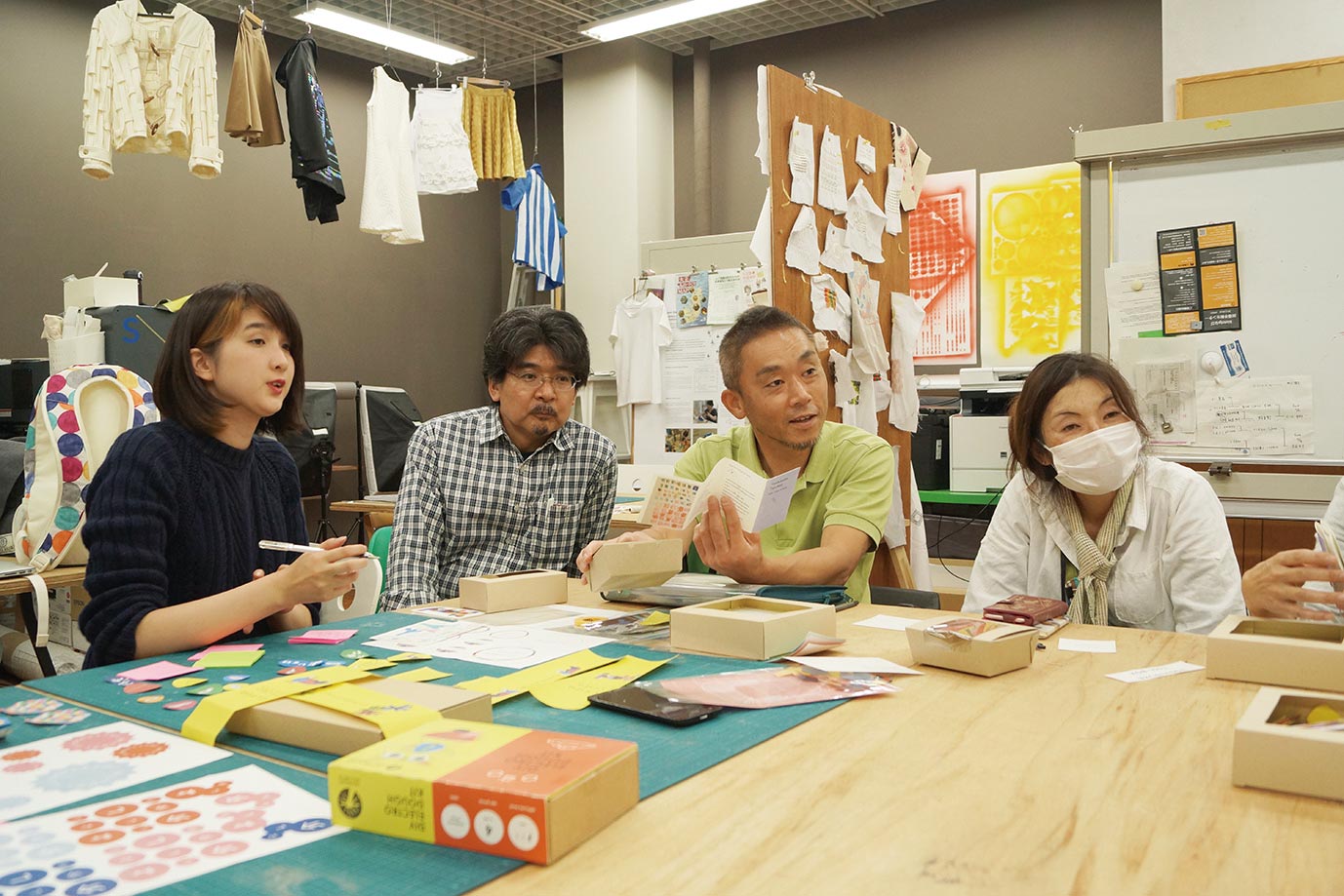
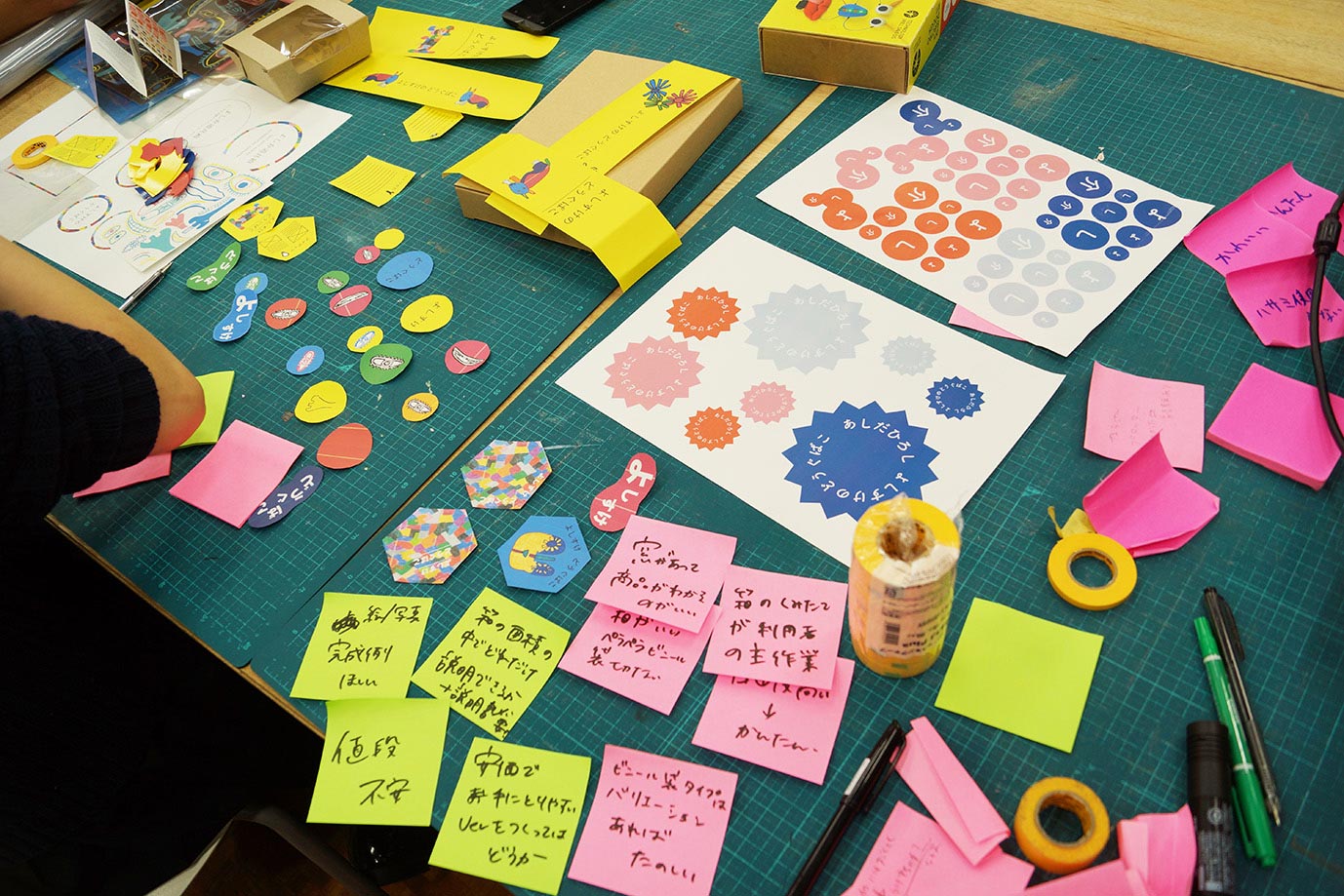
A co-creation project undertaken in cooperation with the Fujisawa Ikuseikai Yoshisuke Crafts, a facility that provides support to people with disability. The works produced at the facility are all captured as design, from the production process of the works to the design of legal systems, and a wide range of research is carried out on these processes.
A society where anyone can be a designer, and take proactive steps to create their own lives—to provide clues for thinking about this “what-if” scenario, we are fortunate that the Keio University Shonan Fujisawa Campus (SFC) has prepared what is known as the “Fab Space.” Fab Space, which aims to spread the message that “FAB is for everyone,” provides various equipment such as 3D printers, 3D scanners, cutting machines, digital embroidery machines and laser cutters, which all SFC students are allowed to use. “DESIGN BY PEOPLE” is a project that seeks to present new possibilities in design through the utilization of this environment. This is a collaborative research between SFC and the neighboring Fujisawa Ikuseikai Yoshisuke Crafts, a facility that supports people with disability. In this project, we conduct research on the design of products and services using digital machine tools as a part of efforts to provide support for employment. All the processes that take place at this facility are captured as design: from production to the design of legal systems, including the conversion of the paintings produced every day into data, the formulation of production manufacturing processes at the site of welfare, and the drawing up of terms of service for products aimed at raising social awareness of people with disability. Alongside with a diverse group of stakeholders, we have promoted research covering a wide range of fields. The outcome of this project is scheduled to be commercialized soon.
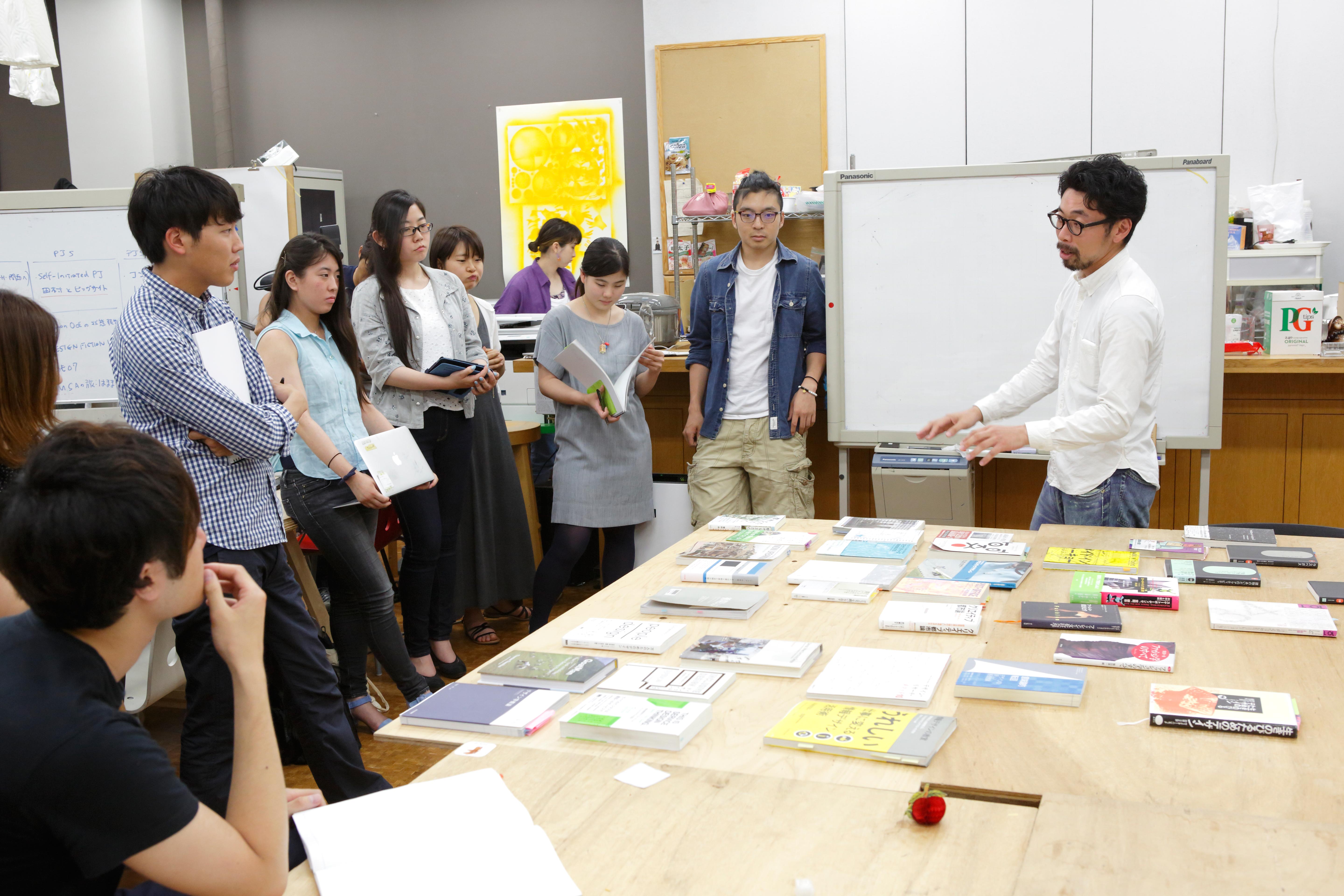
If an era should arrive in which anyone is able to design their own lives without much effort, what would then be the reason for the existence of designers? In response to this question, my answer is, “The people who have been labeled as ‘users’ to date will form the core of acts of design, while designers at the meta-level will be indispensable in cooperating with and supporting these ‘users’.” Meta-level designers could also be described as people who design a support environment for design. They are human resources who have advanced interdisciplinary knowledge and skills, understand users, and are able to design an environment to support the work of design. Compared to conventional designers, we could say that they are closer to serving the role of “facilitators.” I expect the dawn of a society of moderate production and consumption as the next paradigm shift from a mass production and consumption society, and the possible significant change from a development-oriented society based on the premise of production, to a mature society based on the premise of communication. While the rise of meta designers is a hypothesis founded upon this “what-if” scenario, I, as well as the students and the graduates, hope that innovation through design will spread through the whole of society and become an established fact through the planning, formulation, implementation, and presentation of design research projects.
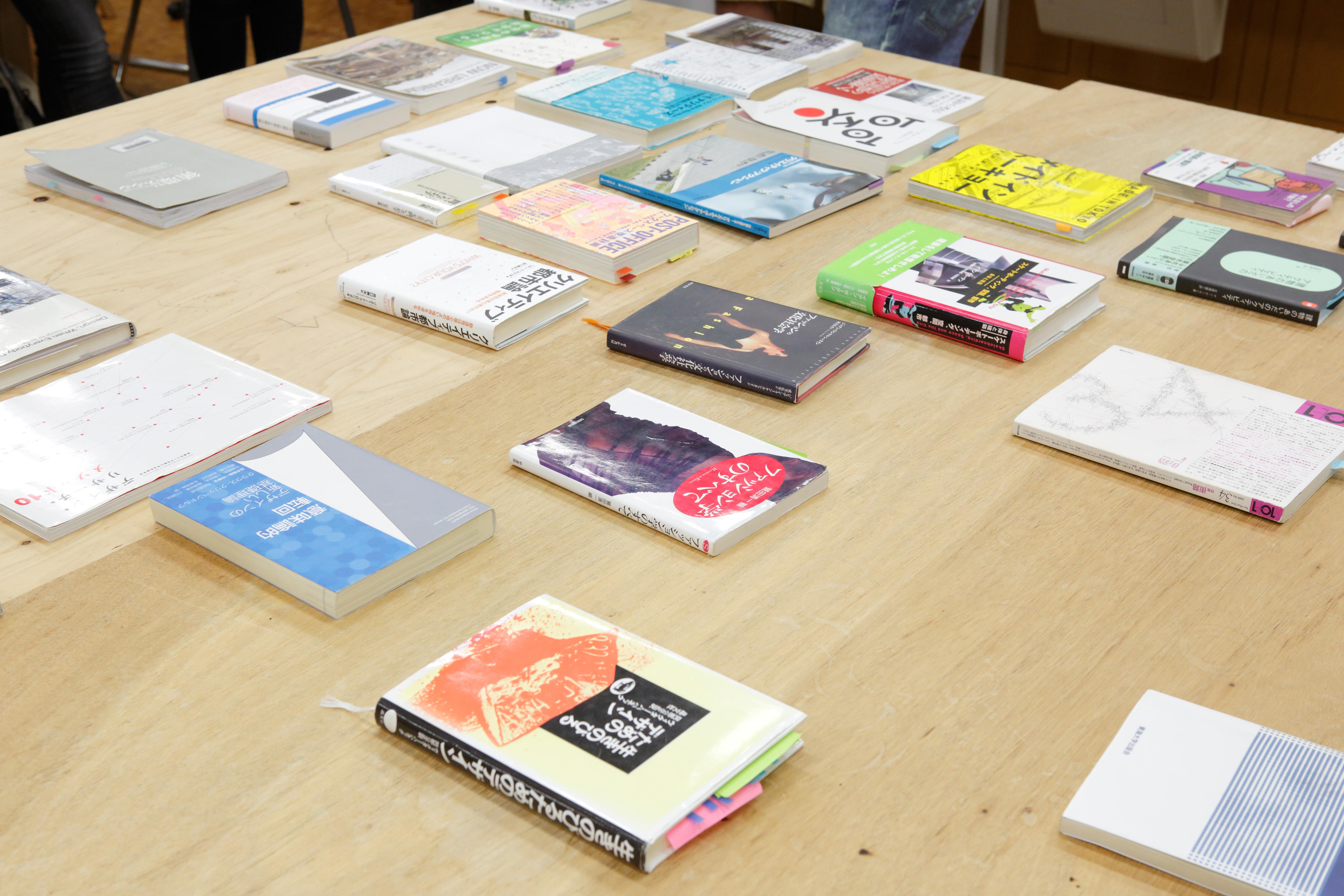
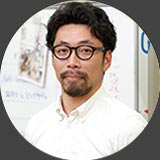
Daijiro Mizuno
Associate Professor, Faculty of Environment and Information Studies, Keio University. Born in Tokyo in 1979. Completed the Doctoral program at the Royal College of Art in the United Kingdom, and was conferred the Ph.D. (Fashion Design) from the same college. Involved in a wide range of design research projects that aim to establish a bridge between design and society.

2016.Sep ISSUE